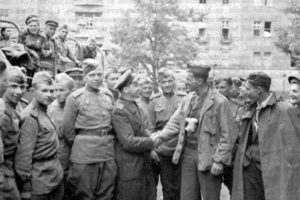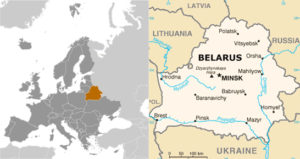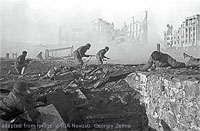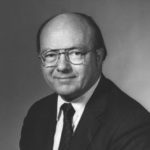Sarah Lindemann-Komarova: “Russiagate, There are No Winners”

Subject: Russiagate, There are No Winners
Date: Thu, 25 Apr 2019
From: Sarah Lindemann-Komarova <echosiberia@gmail.com>
Russiagate, There are No Winners
Sarah Lindemann-Komarova
[Sarah Lindemann-Komarova has been a community development activist in Siberia since 1992. Currently she is focusing on research and writing about civil society in Russia.]
medium.com/@ECHOSiberia/russiagate-there-are-no-winners-4de2dd97acbc
Baby boomers, Gen X, Millennials, Gen Z, we are now into the 4th American generation that has only known armed conflict via “wars of choice”. If there is one thing the on-going Russiagate phenomenon has clarified, it is that many Americans do not understand war the way people in many other countries understand it. It is also clear that no one is going to convince anyone of anything they don’t already believe in relation to Trump, Clinton, Russia, or the 2016 election. That has brought us to a dangerous moment in history.
At a recent Moscow Conference, “Turning Points in Ending the Cold War 1989-2019”, the great Ambassador Jack Matlock said that part of the problem is using the word “war” metaphorically because it confuses people: “war on poverty”, “war on drugs”, “Cold War”. Add to that equating whatever Russia did during the 2016 elections to “an act of war”, 9/11, or Pearl Harbor and we have reached our jumping the shark moment. Only in this context instead of Fonzy on waterskies, we get the Atomic Nuclear Scientists doomsday clock reaching 2 minutes to Midnight. Still, no vigorous anti-war movement, just more anti-Russia rhetoric.
 Most Americans who have heard of Minsk (the capitol city of the former Soviet Belarus Republic) know it as the place where Phoebe’s physicist boyfriend on “Friends” went to work or from Bette Midler’s song “Rochelle, Rochelle from Milan to Minsk” on Seinfeld. It turns out that the capital city with the most comedic sounding name, has one of the least funny histories and is where I learned about the reality of war. It was 1988 on my first visit to Minsk. I was traveling around the Soviet Union with a peace group training for the Moscow Marathon.
We were greeted on the tarmac with a serenade of statistics from the war that paralleled the passion we heard from the Georgians about their wine and nationalism, the Azeris their oil and nationalism, the health spas and their poet Lermontov in Pyatigorsk in Southern Russia. Tucked between the Baltics and Ukraine on the Western Front, Belarus suffered the highest percentage of death in the Great Patriotic War, 25%, one out of every four people, 3 million gone and only 10 buildings left standing after the Nazi invasion. It was strange, we traveled all this way as peace runners and had forgotten about war. We had grown too comfortable with the word peace, it lost its meaning like any word when you repeat it over and over until it becomes gibberish.
Most Americans who have heard of Minsk (the capitol city of the former Soviet Belarus Republic) know it as the place where Phoebe’s physicist boyfriend on “Friends” went to work or from Bette Midler’s song “Rochelle, Rochelle from Milan to Minsk” on Seinfeld. It turns out that the capital city with the most comedic sounding name, has one of the least funny histories and is where I learned about the reality of war. It was 1988 on my first visit to Minsk. I was traveling around the Soviet Union with a peace group training for the Moscow Marathon.
We were greeted on the tarmac with a serenade of statistics from the war that paralleled the passion we heard from the Georgians about their wine and nationalism, the Azeris their oil and nationalism, the health spas and their poet Lermontov in Pyatigorsk in Southern Russia. Tucked between the Baltics and Ukraine on the Western Front, Belarus suffered the highest percentage of death in the Great Patriotic War, 25%, one out of every four people, 3 million gone and only 10 buildings left standing after the Nazi invasion. It was strange, we traveled all this way as peace runners and had forgotten about war. We had grown too comfortable with the word peace, it lost its meaning like any word when you repeat it over and over until it becomes gibberish.
Several weeks ago, I was back in Minsk and again stepped on the landmine of the reality of war. This time it was during a cool, 6AM walk. I crossed the four-lane highway next to my “BonHotel- Perfect Place to Work and Sleep”. On the other side up a slight hill was an old church and graveyard. Entering the stone archway, I looked at the graves to my left, 1944, 41, 41, 42, 44, 40, 44, 40, 40, 43, 43, 43, 44… a cluster of death that can be found in some American graveyards but none of these dead are soldiers. They are 50 year old men and women, 12 and 13 year old girls and boys. Some of the gravestones are very simple with just a name and a date of death or “killed”. Others are more elaborate with photos of the dead. One of these had a photo of a sister who survived and a Virgin Mary like image for the 18 year old sister who did not.
Every grave was haunting, but it was Ekaterina Vasilovna Kleyankina that broke my heart. Born March 19, 1926 and died June 22, 1944 at age 18 , she was a year younger than my mother, Cissie Williams, who spent World War II in Chevy Chase Maryland. Ekaterina’s 3 foot gravestone featured a backlit, waist-up image of her in a striped top and ring on her left middle finger. Light brown, chin length hair parted on the side, clear skinned face with slim, pursed lips and wide set eyes that glare at you. It is a look not of anger but condemnation for everything lost because man allowed certain forces to be set in motion that placed her in the worst place to be at a time when in her part of the world there was no good place to be. You don’t have that experience in an American graveyard, we have no reference point.
USC’s Robert English was the last American to speak during the final Moscow conference session. He offered a passionate plea to turn down the rhetoric along with one more factor that has brought us to this perilous place that so few Americans know they are in. According to English, since the Cold War ended there has been a big change in how US academia trains Russian, post-Soviet, and international affairs experts. “It has become increasingly technical, narrow, and disinterested in deep understanding of history and culture. It embraces statistical methods that search for big data to analyze, not important problems to understand.” He went on to say that this new generation of specialists, including think tank experts and journalists, “know a lot about some little things, and little about some of the most important ones.” In this attempt to make the study of politics more scientific, more statistical “for all the depth we gain we also lose breadth, we can no longer see the forest because of the trees.”
In 1988 they took us on an excursion 54 km. North East of Minsk where there is a “Square of Memory” that consists of three birch trees symbolizing life and an eternal flame for the ¼ of the population who died. This is part of a memorial complex located in Khatyn, one of 628 Belarus villages that were burned to the ground. A piece of earth was brought from each of the other 185 villages that were not rebuilt to create a “Cemetery of Villages”. The foundations for each of the 26 houses in Khatyn have been restored along with a chimney that rises to the original height of the house. Each chimney has an electronic bell that rings every 30 seconds. The villagers were not particularly worried when the soldiers arrived on the morning of March 22, 1943. They had been there before and left peacefully after taking whatever goods they wanted. This time they herded every man, woman, and child into a barn, doused it with gasoline and set it on fire. Soldiers stood outside the barn and opened fire to make sure no one got out alive. Out of 156 villagers, 147 died that day, including 75 children. Five children hid and survived, two adults were away visiting friends. They missed one man, Joseph Kaminsky, 56 years old. At the entrance to the memorial is a 6 meter bronze statue of Kaminsky carrying the limp body of a child in his arms, his son. The statue is called “The Unconquered Man” but there is no victory here. This is war and it is not forgotten.

May 9th millions of people in this part of the world still celebrate Victory Day with a reverence that has not diminished over 74 years. The parades will honor the 27 million lives lost in the Soviet Union, pay tribute to everyone else who sacrificed and survived, and keep the memory of the reality of war alive for the next generations. While this is going on Americans will be bombarded with more images, metaphors, and data to convince them that Russia is not only an enemy, but an existential threat and Russia will continue to respond with an aggressive defensive posture. That is not offered as an indictment or defense of any side, if you flip the roles and believe Russia is the aggressor and America the victim the dynamic is the same and it can only lead to escalation. We need to rethink how we move forward, more options. That is what President Kennedy demanded from his advisors when he was only being offered aggressive military solutions during the Cuban Missile Crisis. One was found, everybody got a little something, and war was averted.
 Ambassador Matlock reminded conference goers that people have forgotten that a nuclear war cannot be won so it must never be fought. He said it was a task for the next generation of Russians and Americans to revive the spirit of respect, discipline, and trust that brought an end to the Cold War. I agree but I would like to suggest we go beyond the nuclear threat and promote something more comprehensive, a real, global peace movement. We can no longer be scared into thinking this is an impossible dream, a fantasy by naïve people. The reality, the one certainty is there are no winners in war. There are only voices from the graves.
Ambassador Matlock reminded conference goers that people have forgotten that a nuclear war cannot be won so it must never be fought. He said it was a task for the next generation of Russians and Americans to revive the spirit of respect, discipline, and trust that brought an end to the Cold War. I agree but I would like to suggest we go beyond the nuclear threat and promote something more comprehensive, a real, global peace movement. We can no longer be scared into thinking this is an impossible dream, a fantasy by naïve people. The reality, the one certainty is there are no winners in war. There are only voices from the graves.
[featured photosd are file photos]
